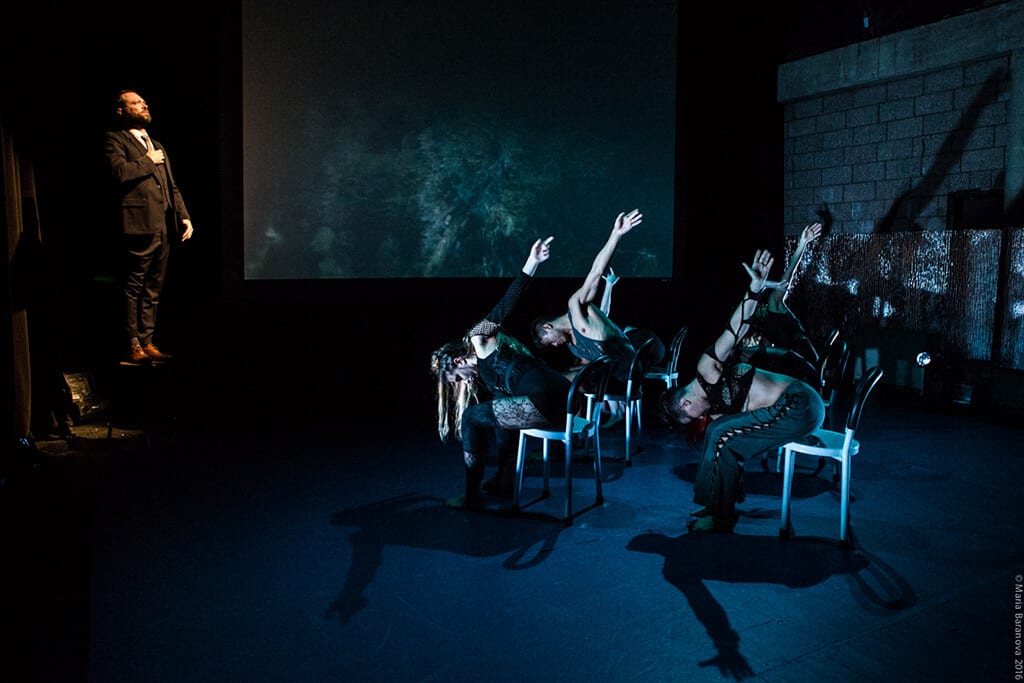Dan Safer’s latest creation with the dance-theatre group Witness Relocation follows a college professor/lecturer type as he grapples with his own mortality and his relationship to nature and time. The piece begins with a lecture of his in an undeterminable location (perhaps the very theater it takes place in?) that turns into a more personal cry for understanding of time and belonging. Just as the speech is getting intriguing, the dancers begin telling their own story just upstage of the speaker’s own. They may be a reflection of the speaker’s own worldview or the maddening confusion that plagues him. This is never made certain, and the hybrid of lecture and expression remains a source of confusion throughout the piece.
It may be that I personally have trouble making the connection between the two forms. This is unlike musical theater, where dance and song/speech can co-exist to tell one story. In this piece, neither the dancing nor the text seems to complement the other, except in a few cohesive moments. The intellectualism from the speaker takes time for the audience to digest, and the modern expression from the dancers deserves it own spotlight in order to keep an audience focused on which part has the floor.
The speaker lives in a home he interprets as a to-be-forgotten episode of “Leave it to Beaver”, complete with the show’s theme music. On the other hand, he is given moments of vulnerability and even silliness. However, there is very little rapport established, since the speaker’s status with the audience wavers. After a while, he begins breaking down a fourth wall that isn’t even there to begin with, by commenting on his own blocking and forcing upon his audience a hopelessly confusing set of questions about existence, all the while not making strides to solve his own problems. The discomfort this created was maddening: it became impossible to empathize with, and the overall questions of the piece became pushed rather than reflected upon, wondered about, and expressed with smarts.
Attention must be paid to one moment of particular awe, when our protagonist, whilst surrounded by whirling and unstoppable dancers, in the midst of chaotic dialogue about existence and reality, asks the audience to “project its own content” onto the happenings onstage. He then mouths a speech to us while the dancers continue, and for the first time, we understand the protagonist’s struggle to make sense of the ever-changing world, especially when surrounded by those (the dancers) who cannot understand him due to the different ways he interprets. We feel his loneliness, and the dancing becomes dangerous yet entrancing. Had more of the evening been filled with revelatory moments like these, the piece would have at least made a concrete point about personal and almost unavoidable tragedy.
The forms rarely meld together, and they are not held together by a unified expression or a concrete story. An audience may be left wondering about the roles they played with each other, but alas will not likely be moved by the work done on either side.

